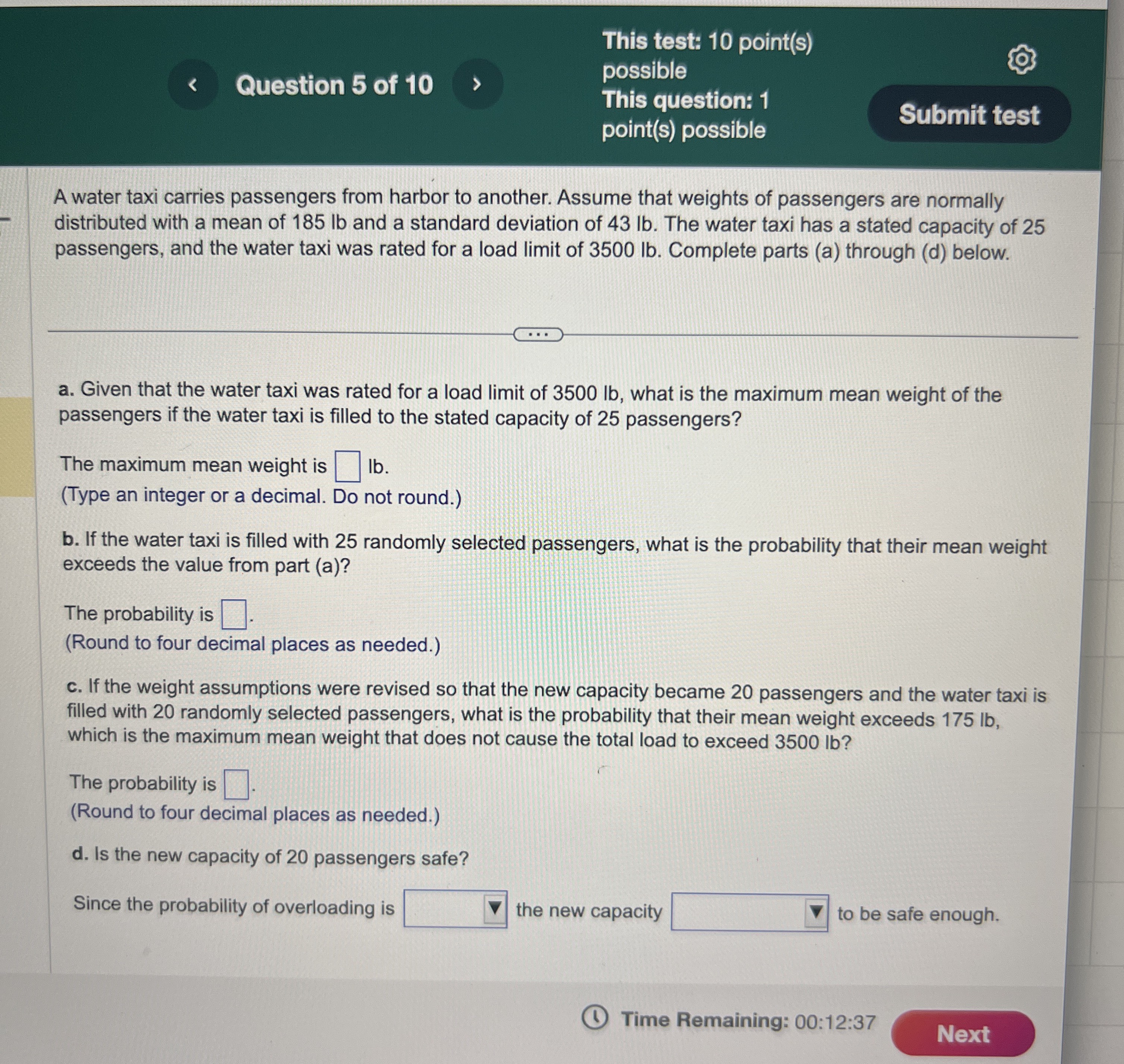Question 5 of 10 This test: 10 point(s) possible This question: 1 point(s) possible Submit test A water taxi carries passengers from harbor to another. Assume that weights of passengers are normally distributed with a mean of \( 185 \mathrm{lb} \) and a standard deviation of \( 43 \mathrm{lb} \). The water taxi has a stated capacity of 25 passengers, and the water taxi was rated for a load limit of \( 3500 \mathrm{lb} \). Complete parts (a) through (d) below. a. Given that the water taxi was rated for a load limit of \( 3500 \mathrm{lb} \), what is the maximum mean weight of the passengers if the water taxi is filled to the stated capacity of 25 passengers? The maximum mean weight is \( \square \mathrm{lb} \). (Type an integer or a decimal. Do not round.) b. If the water taxi is filled with 25 randomly selected passengers, what is the probability that their mean weight exceeds the value from part (a)? The probability is \( \square \). (Round to four decimal places as needed.) c. If the weight assumptions were revised so that the new capacity became 20 passengers and the water taxi is filled with 20 randomly selected passengers, what is the probability that their mean weight exceeds \( 175 \mathrm{lb} \), which is the maximum mean weight that does not cause the total load to exceed \( 3500 \mathrm{lb} \) ? The probability is \( \square \). (Round to four decimal places as needed.) d. Is the new capacity of 20 passengers safe? Since the probability of overloading is the new capacity to be safe enough. Time Remaining: 00:12:37 Next
UpStudy ThothAI Solution
Quick Answer
Step-by-step Solution
Enter your question here…
